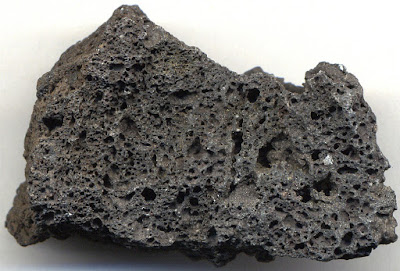- Get link
- X
- Other Apps
Rocks
Making up the majority of the Earth's crust, rock is
usually defined as a mixture of common minerals. Rocks can be hard or soft, as
small as a grain or as large as a building. They have been an integral part of
the history of mankind, first being used as tools for hunting and defense, and
as a building materials to construct shelters and monuments. Combined with the
effects of tectonics, weathering and vegetation, rocks define the natural
landscapes we see around us. The minerals and metals we find in rocks are
essential to the prosperity and cultural splendor of human civilization. There
are many kinds of rock, and they can be classified in a number of ways.
However, geologists classify rocks based on how the rocks were formed. The
three classes are igneous rocks (formed directly from liquid rock), metamorphic
rocks (formed by direct alteration of existing rocks), and sedimentary rocks
(formed by eroded materials from other rocks).
Sedimentary rocks
Formation of sedimentary rocks
A
river carries, or transports, pieces of broken rock as it flows along.
When the river reaches a lake or the sea, its load of transported rocks settles
to the bottom. We say that the rocks are deposited. The deposited rocks
build up in layers, called sediments. This process is called sedimentation.
The
weight of the sediments on top squashes the sediments at the bottom. This is
called compaction. The water is squeezed out from between the pieces of
rock and crystals of different salts form.
The
crystals form a sort of glue that sticks or cements the pieces of rock
together. This process is called cementation.
These
processes eventually make a type of rock called sedimentary rock. It may take
millions of years for sedimentary rocks to form.
These are the different processes in order:
sedimentation → compaction → cementation
Igneous rocks
The second type of rock we'll look at is igneous rock.
Formation
The inside of the Earth is very hot - hot enough to melt rocks. Molten
(liquid) rock forms when rocks melt. The molten rock is called magma. When the
magma cools and solidifies, a type of rock called igneous rock forms.
What are they like?
Igneous rocks contain randomly arranged interlocking crystals. The size
of the crystals depends on how quickly the molten magma solidified. The more
slowly the magma cools, the bigger the crystals.
You may have done an experiment at school with a substance called salol.
If molten salol cools slowly, you get big crystals. If it cools quickly, you
get small crystals.
Obsidian and basalt
If the magma cools quickly, small crystals form in the rock. This can
happen if the magma erupts from a volcano. Obsidian and basalt are examples of
this type of rock. They are called extrusive igneous rocks because they form
from eruptions of magma.
Granite and gabbro
If the magma cools slowly, large crystals form in the rock. This can
happen if the magma cools deep underground. Granite and gabbro are examples of
this type of rock. They are intrusive igneous rocks because they form from
magma underground.
Unlike sedimentary rocks, igneous rocks do not contain any fossils. This
is because any fossils in the original rock will have melted when the magma
formed.
Metamorphic rocks
Metamorphic rocks are the third type we'll look at. They formed from
other rocks that are changed because of heat or pressure.
Formation
Earth movements can cause rocks to be deeply buried or squeezed. As a
result, the rocks are heated and put under great pressure. They do not melt,
but the minerals they contain are changed chemically, forming metamorphic
rocks.
Sometimes, metamorphic rocks are formed when rocks are close to some
molten magma, and so get heated up.
Remember that metamorphic rocks are not made from melting rock. (Rocks
that do melt form igneous rocks instead.)
What are metamorphic rocks like?
When a metamorphic rock is formed under pressure, its crystals become
arranged in layers. Slate, which is formed from shale, is like this. Slate is
useful for making roof tiles because its layers can be split into separate flat
sheets.
Marble is another example of a metamorphic rock. It is formed from
limestone.
Metamorphic rocks sometimes contain fossils if they were formed from a
sedimentary rock, but the fossils are usually squashed out of shape.
Metamorphic rocks can be formed from any other type of rock - sedimentary
or igneous. Remember these two examples of common metamorhpic rocks and where
they come from:
- slate is formed from shale
- marble is formed from limestone
If you have any doubt related to this topic comment below :
If you have any other topic for suggestion you can suggest us :
- Get link
- X
- Other Apps
Comments




This comment has been removed by the author.
ReplyDeletehttps://enzytech.blogspot.com/
ReplyDelete